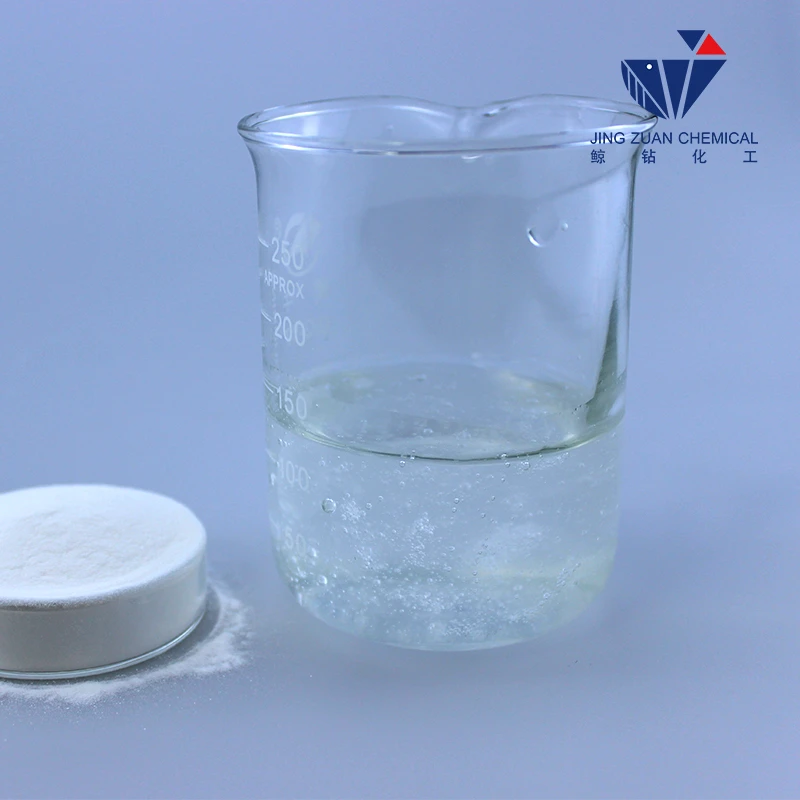
ഡിസം . 12, 2024 04:21 Back to list
hydroxyethyl cellulose for paint
The Role of Hydroxyethyl Cellulose in Paint Formulations
Hydroxyethyl cellulose (HEC) is a cellulose ether that has gained prominence in various applications due to its unique properties. One of its most significant uses is in the formulation of paints and coatings. This article explores the role of HEC in paint, its benefits, and its impact on the overall performance and characteristics of paint products.
Understanding Hydroxyethyl Cellulose
HEC is derived from natural cellulose through a series of chemical modifications, particularly the substitution of hydroxyl groups with hydroxyethyl groups. This modification enhances its water solubility and viscosity-modifying capabilities. HEC is a white, odorless powder, and when mixed with water, it forms a clear, viscous solution. Its unique rheological properties make it an essential ingredient in many formulations, particularly in the paint and coatings industry.
Benefits of Using HEC in Paint Formulations
1. Thickening Agent One of the primary functions of HEC in paint formulations is its role as a thickening agent. By increasing the viscosity of the paint, HEC helps to improve the handling characteristics during application. A thicker consistency ensures that the paint adheres better to surfaces and reduces the likelihood of drips and runs.
2. Improved Open Time HEC enhances the open time of paint, allowing for better working conditions. Open time refers to the period during which the paint remains workable after being applied. This is particularly important in scenarios where larger surfaces are being painted, as it allows for adjustments and smoothing before the paint begins to set.
3. Stability In paint formulations, HEC contributes to the stability of emulsions and suspensions. Its hydrocolloid nature helps to prevent settling of pigments and other solids, ensuring a uniform distribution throughout the paint. This stability is crucial for achieving consistent color and performance in the finished product.
hydroxyethyl cellulose for paint

4. Film Formation HEC plays a vital role in the film-forming properties of water-based paints. After application, as the water evaporates, HEC helps in the formation of a continuous film. This film provides a durable, protective layer on the substrate, enhancing the longevity and appearance of the painted surface.
5. Texture and Finish The incorporation of HEC in paint formulations allows for the customization of texture and finish. Depending on the desired outcome, HEC can be used to achieve various finishes, from matte to glossy, thereby expanding the versatility of paint products.
6. Environmentally Friendly As a non-ionic, biodegradable polymer, HEC aligns with the growing trend towards environmentally friendly products. Water-based paints containing HEC are often low in volatile organic compounds (VOCs), making them safer for both the environment and human health.
Application Scenarios
HEC is particularly beneficial in various types of paint, including interior wall paints, exterior coatings, and even specialty paints such as those used for artistic applications. In architectural coatings, for example, HEC can enhance the durability of the paint while providing excellent leveling properties. In industrial coatings, it ensures consistent performance under different application conditions.
Conclusion
Hydroxyethyl cellulose is an invaluable ingredient in modern paint formulations. Its ability to function as a thickening agent, improve stability, enhance film formation, and customize textures makes it a go-to choice for formulators in the paint industry. As the demand for high-performance, eco-friendly products continues to rise, HEC is poised to play an even more significant role in the development of innovative paint solutions. By incorporating HEC, manufacturers can meet consumer expectations for quality, durability, and environmental responsibility in their paint products. As such, HEC not only enhances the performance of paints but also contributes to the sustainability goals that are becoming increasingly crucial in today’s market.
-
Why HPMC is a Key Additive in Wall Putty Formulations
NewsAug.05,2025
-
Redispersible Powder in Decorative Renders: Function Meets Finish
NewsAug.05,2025
-
Redispersible Powder for Interior Wall Putty: Smooth Results Every Time
NewsAug.05,2025
-
HPMC’s Water Retention Capacity in Dry Mortar Applications
NewsAug.05,2025
-
HPMC Factory Contributions to Liquid Detergents
NewsAug.05,2025
-
How HPMC Factory Products Change Detergent Textures
NewsAug.05,2025







